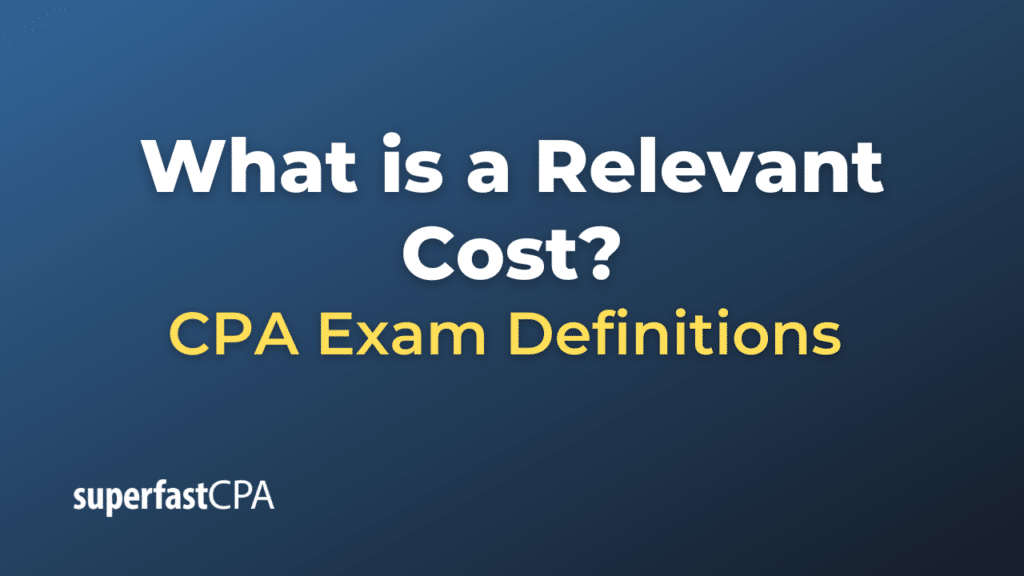Relevant Cost
A relevant cost, in managerial accounting and decision-making, refers to a cost that will be affected by a specific management decision. These costs differ between various alternatives being considered and have a bearing on the future. Relevant costs are essential for evaluating different options because they provide a clear picture of the financial implications of one choice versus another.
Two key characteristics of relevant costs are:
- Future-oriented: Relevant costs are concerned with future cash flows. Costs that have already been incurred and cannot be changed by any current or future decision are considered “sunk costs” and are not relevant.
- Different among alternatives: For a cost to be relevant, it must differ between the various decision alternatives. If the cost remains the same regardless of the choice made, it’s not relevant for decision-making.
Types of relevant costs include:
- Opportunity Costs: The benefit forgone by choosing one alternative over the next best alternative.
- Incremental (or Differential) Costs : The additional costs that will be incurred if a particular action is taken compared to another.
- Avoidable (or Escapable) Costs: Costs that can be eliminated by not engaging in an activity.
Example of a Relevant Cost
Let’s delve into a more detailed example that showcases the concept of relevant costs in a decision-making scenario:
Imagine a company named “TechGlow” which sells high-end electronic equipment. One of their popular products is a specialty printer. Recently, a batch of these printers was found to have a defect. TechGlow is now faced with a decision: should they repair the defective printers or replace them entirely?
Option 1: Repairing the Printers
- Cost of repair parts: $40 per printer
- Labor cost for repairs: $30 per printer
- Additional testing after repair: $10 per printer
Option 2: Replacing the Printers
- Cost of a new printer: $100
- Shipping cost for new printers to customers: $20 per printer
- Original manufacturing cost of defective printers: $70 (This is a sunk cost as it has already been incurred)
Analysis:
When analyzing which option is more financially viable, TechGlow should consider only the relevant costs:
Relevant Costs for Repairing:
- Parts: $40
- Labor: $30
- Testing: $10
- Total Cost for Repair: $80 per printer
Relevant Costs for Replacing:
- New printer: $100
- Shipping: $20
- Total Cost for Replacement: $120 per printer
In this scenario, the original manufacturing cost of the defective printers ($70) is a sunk cost and therefore not relevant to the decision. Even though TechGlow initially spent $70 on manufacturing each defective printer, this amount won’t change regardless of the decision to repair or replace.
Based on the relevant costs, repairing the printers would cost TechGlow $80 per printer, while replacing would cost $120 per printer. Therefore, from a cost perspective, it would be more economical for TechGlow to choose to repair the defective printers.
This example illustrates how focusing on relevant costs – costs that will be incurred in the future and are different between decision alternatives – can help in making informed decisions.













